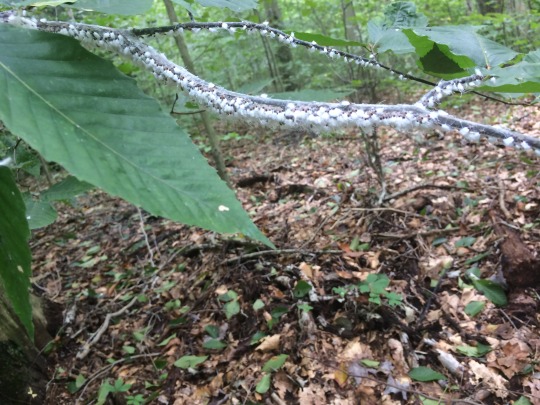by John Wenzel

Aphids are usually small wingless insects that suck sap from plants, usually specializing on one kind of plant. Many species can reproduce rapidly by parthenogenesis, where females give live birth to daughters without mating. They can build up great numbers quickly, which is why aphids are often pests of crop plants. In late summer or early autumn, populations are about as large as they are going to get, and soon a generation of both male and females that has wings is produced. These will disperse and mate before winter comes. The winged females will lay eggs that last over winter to start the cycle again in the spring. In our area, one amusing species is the beech blight aphid (Grylloprociphilus imbricator) that feeds on beech trees. The aphid produces from its abdomen profuse wax fibers that give it a woolly appearance. In the photo shown here, the aphid itself is just a small brown dot at one end of the white fluffy wax mass. The wax is essentially a shield, and a predator that bites into the woolly floss will come away with nothing but wax. These aphids have a defensive behavior of waving their abdomens and the wax shield when they are disturbed, as you can see in this video of dancing aphids.
Because sap has far more sugar than nutrients, aphids need to get rid of the sugar by excreting it in the form of honeydew. Under a mass of aphids like that shown here, the honeydew will accumulate on the branches or the ground below the aphid colony and will attract flies, bees, wasps, and other insects seeking the sweet liquid. There is a black sooty mold (Scorius spongiosa) that grows only on the honeydew of beech aphids, and can build up a large mass. Neither the aphids nor the mold are detrimental to beech trees, so there is no need to try to exterminate either of them. If they are considered a nuisance by a homeowner, it is easy to wash the aphids off the branches with a hose.
John Wenzel is the Director at Powdermill Nature Reserve, Carnegie Museum of Natural History’s environmental research center. He has published research on the evolution of web building behavior. Museum employees are encouraged to blog about their unique experiences and knowledge gained from working at the museum.
